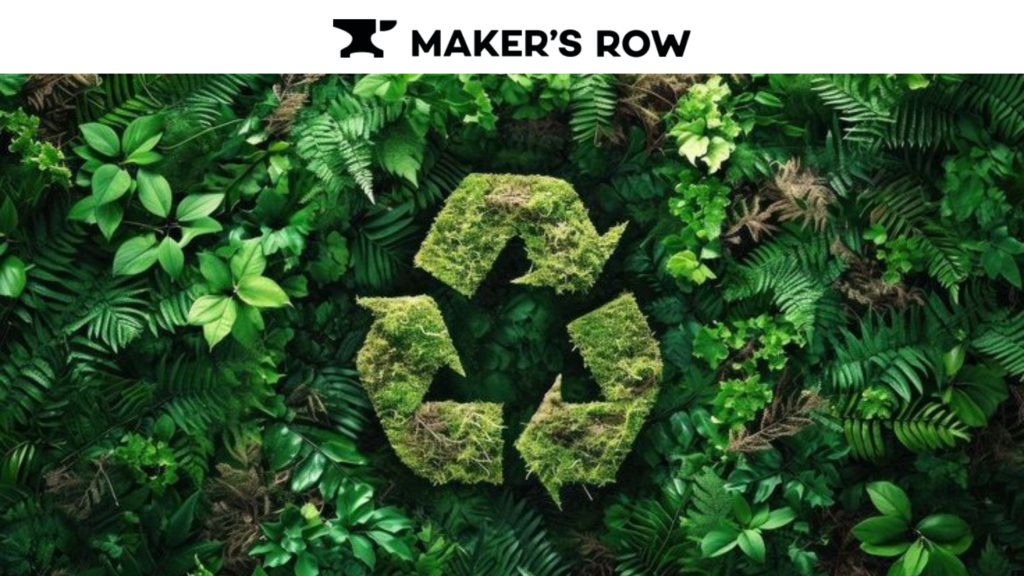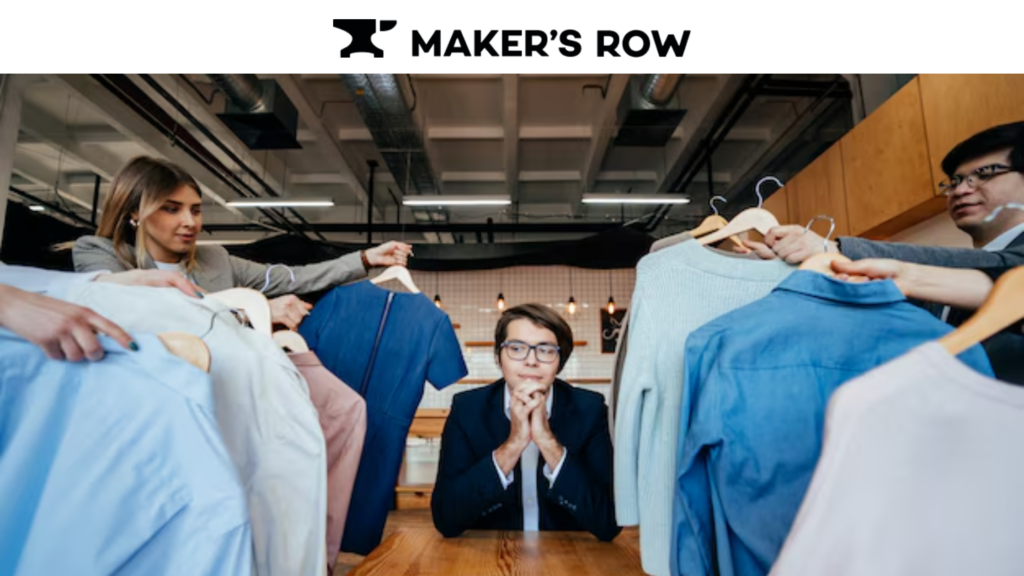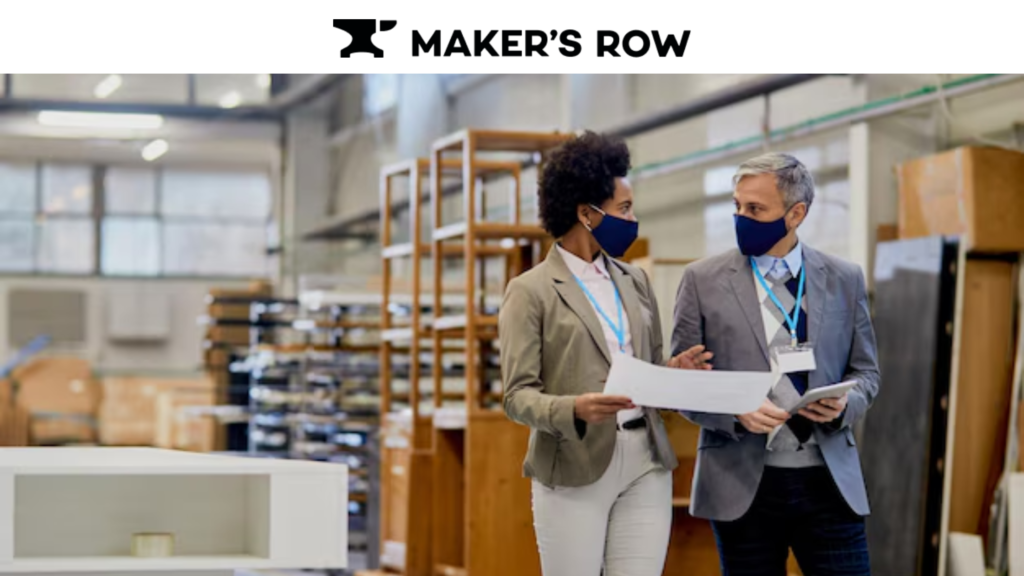The concept of circular economy picked up momentum in all apparel manufacturing industries over the last few years and was no exception to the textile production industry. More emphasis on the environment made consumers conscious and sensitized, forcing the factory owners to adapt to this new paradigm. Besides the benefits of including principles of circular economy in the environment, it also boosts efficiency at the stage and brings down the cost for the manufacturers.
This blog elaborates on more details that owners of these factories need to know concerning the circular economy in apparel production.
What is a Circular Economy?

A circular economy is an economic model that seeks no more waste; there is continuous use. It departs from the “take-make-dispose” business model conceptualized by the old linear economy, which offers alternatives of recycling, reusing, and minimizing the waste involved in a production chain. It demands innovation in the way garments are designed, produced, used, and disposed of in the apparel industry.
The circular economy model focuses on holistic production, taking into account all the stages of a product’s life cycle, starting with raw material sourcing through the design and manufacturing process right through to distribution, consumer use, and finally disposal or recycling. The circular economy, therefore, attempts to minimize environmental impacts while maximizing economic value by closing the resource-use loop.
SIGN UP FOR A FREE DEMO!!
Key Principles for Apparel Manufacturers:

Design for Longevity
- Reinforce long-lasting, quality apparel for extended wear.
- Use stronger stitch methods and reinforce all stress points.
- Use materials that do not wrinkle easily or are known to withstand well.
- Module design for easy repair and fine-tuning
- Design clothing that has detachable parts, like removable collars or cuffs.
- Make it malleable enough to use in different directions, thereby increasing its usability.
Use recyclable materials.
- Recovered fibers and textiles.
- Use the post-consumer recycled polyester or nylon.
- Find recycled cotton or wool alternatives; that is, learn innovative, eco-friendly materials.
- Research a bio-based fabric: Tencel or organic cotton.
- Focus on using new materials, like pineapple leather or mycelium-based fabrics
Rationalize Production Processes
- Reduced cut and seam waste
- Implement CAD for rational distribution of patterns.
- Look into zero-waste pattern-cutting techniques.
- Water and energy-saving technologies installation.
- Installation of a wastewater recycling system for dyeing.
- Install energy-saving appliances and LED bulbs.
- Waste reduction in the system through lean manufacturing principles.
Promote take-back programs.
- Install clothes-collecting systems from the old clothes.
- Design drop-off points in stores for customers to deposit used clothing.
- Partner with third-party logistics companies to properly collect and sort
- Partner with recycling houses to process backhaul product
- Engage with specialized companies that recycle textiles.
- Discuss how the returned garments can be upcycled into new products.
Benefits for Manufacturing Owners

Some of the benefits that could come out for the clothing manufacturer are:
Cost Saving: Reduce costs
Here, one needs to ensure maximum usage of resources along with minimal wastage in the factory. This ranges from raw material savings to energy consumption and the charges of disposal. For instance, proper cut techniques have actually helped save 15% of fabric or more, directly touching the bottom line.
Brand Reputation
Those who can answer the call for sustainable products would enhance brand image and appeal to environmentally conscious consumers. Manufacturers embracing circular economy principles will increasingly position themselves within a more sustainable market as more consumers begin to make environmentally informed purchasing decisions.
Staying one step ahead of the environmental curve allows a company to avoid getting implicated in lawsuits and fines. Stricter environmental law is being developed in many countries; aligning in advance with circular economy practices promotes compliance and avoids expensive penalties.
Innovation Opportunities
New materials and processes will evolve into innovative products, and new markets will be defined by such products. In this respect, the company opens new revenue streams and is recognized as an industry leader in green fashion.
Long-term Sustainability
Through recycling and reusing, recycling can protect against long-term sustainability in any enterprise. There is going to be an increase in scarce and expensive natural resources; hence, the circular economy practices help cushion against supply chain disruptions and price volatility.
Employee Satisfaction
Sustainable practice, therefore, enhances employee satisfaction and acts as an attractive function among top talents who are increasingly looking for environmentally responsible employers.
SIGN UP FOR A FREE DEMO!!
Problems and Issues
Indeed, such a circular economy model brings its merits. However, the whole process of transition itself is pretty terrifying.
Initial investment is required before new technologies and processes can utilize resources on a massive scale. This would imply that the factory owners require analyzing returns from their investment and appropriate funding or partnership to smoothen the transition.
Supply chain complexity: Never an easy one to coordinate suppliers and buyers when they are designing closed-loop systems, though this depends on good communication channels and possibly new strategic partners in the value chain.
Skills and Training: These workers will be taught new techniques and technologies, including new materials, advanced machinery, and sustainable design principles, among others.
Education of consumers on the value of circular economy products must take place through market acceptance to achieve success. Manufacturers may require money for marketing and consumer education to receive demand for sustainable products.
Use of recycled material-based processed parts instead of virgin materials; the variability of residues is very challenging for quality control. Thus, it will demand rigorous processes for quality assurance.
Scalability: These circular economy practices work perfectly well at small scales. However, they may not hold at industrial scales. Owners need to see how they can sustain the same efficiency and economy once production is scaled up.
SIGN UP FOR A FREE DEMO!!
Steps in Implementation
- Analyze current practices: Look at current manufacturing processes to determine where the scope can be changed. Clearly defined and quantifiable and attainable objectives for reducing waste, conserving energy, and conserving the use of materials.
- Associate with stakeholders: Contact the suppliers, customers, and industry partners to associate all the circular economy initiatives in the supply chain.
- Invest in technology: Seek newer technologies based on principles of the circular economy, such as recycling equipment with advanced technology or material innovation sustainably.
- Train your workforce: Provide comprehensive training to ensure that all employees understand and can apply circular economy practices.
- Monitor and iterate: Never stop observing the results of changes made and be prepared to change strategies if those results and the new developments in the field so require.
About Maker’s Row
Makers Row, where factory owners can build their way towards the realization of circular economy principles in the manufacture of garments by connecting with better practices that have improved their sustainable practices. Being an online marketplace connecting American manufacturers with brands and designers, Makers Row ensures local production, which reduces transportation emissions and makes the take-back program implementation end. Such a platform offers transparency with which brands can select partners that align with sustainability goals. It also supports small batch and on-demand production, eliminating the risks of overstock and waste. For the factory owners, it will increase visibility for sustainable practices in which access to networking with eco-conscious brands or knowledge and resources on the latest sustainable manufacturing techniques is possible.
Conclusion
Going circular in apparel manufacturing is not only a must but a future industrial evolution. Companies embracing these concepts early will be more likely to benefit from how to take advantage of the growing marketplace, becoming progressively more environmentally conscious as it continues to develop. Their futures and their ability to create space for an apparel manufacturer within the global market will depend on their capacity to present three important facets: sustainability, efficiency, and innovation.
A circular economy would really cause a fundamental shift in the basis on which we produce clothing and consume it. For the factory owner, there is innovation and cooperation and reimaging his role in the ecosystem of the fashion world.
Of course, the route is complicated; however, the benefits that lie both in business terms and in environmental terms are huge. Leaders who believe in a circular economy will pave the way for their industries to step into a sustainable and prosperous apparel market.
Read more blogs here: